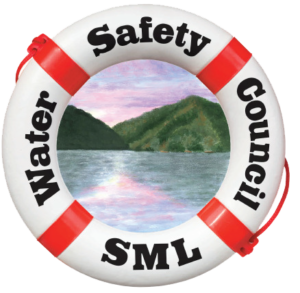
WATER SAFETY COUNCIL: Cold Water Drowning…Not Necessarily

Living around the Lake with the record low temperatures we’ve experienced lately makes it important to review how to survive immersion in super-cold water.
During exercise and high temperatures, our body dissipates heat by sweat and evaporation. Similarly, when immersed in cold water, the body loses heat through the contact of water with the skin. As surrounding water sucks heat away from the body, hypothermia (the lowering of the body’s core temperature) sets in, we become weak and lethargic, and we can quickly drown.
When the face is immersed in water that is seventy degrees Fahrenheit or less, the MDR (Mammalian Diving Reflex) kicks in. So how does the MDR help us survive? The body automatically slows down our respiration and heartbeat to where they are nearly undetectable, constricts the muscles in our extremities, and directs oxygen laden blood to our brain and critical organs. This is more pronounced in infants and children, where there have been cases of resuscitations after forty minutes of submersion. In adults, survival for twenty five minutes is possible.
As a result, lifeguards and EMTs go by the axiom, “You are not dead until you are warm and dead”. The MDR reverses quickly so it’s imperative that CPR is administered immediately and the patient is quickly transported to advanced medical care. The old assertion that brain death occurs four to six minutes after one stops breathing isn’t always applicable in these cases.
What else can you do if you find yourself unceremoniously dunked in water below seventy degrees? First and foremost, you should ALWAYS wear a personal flotation device (lifejacket) around the water, on your dock, and in your boat—but especially in cold weather. “But I’m a great swimmer”, you say. Slip on a slick spot and hit your head, perhaps? Even Olympic caliber athletes can’t swim when they are dazed or unconscious.
Have you ever tried to swim in clothes, much less winter coats and boots? It’s nearly impossible without flotation assistance. As a point of information, the side stroke, breast stroke or elementary back stroke, all with underwater recoveries (arms remain in the water), are the best strokes to use when swimming in clothes. Getting survival training that teaches how to inflate clothes for flotation is also a good idea.
In cold water, keep your head above the surface. As mentioned in a previous Water Safety Notes, more heat is lost through the head than any other part of the body. If you can’t swim to safety, assume the American Red Cross HELP position: knees to the chest, keeping body as compact as possible to retain heat. With more than one person in the water, an ARC HUDDLE position (side by side with arms around one another’s waists, as in a football huddle) with knees held close to chests will help retain heat.
Other hypothermia tips: Warm the torso and head first with clothes and blankets. Warming hands and feet next to a fire may feel good, but it forces the coldest blood in your body to your core and may reduce your temperature even more. If you feel you have frost nip (cold, painful red skin on your extremities), warm gradually. If you feel you have frost bite (pail, no pain, frozen opaque skin), take care not to rub and create more tissue damage (there are ice crystals there). Instead, warm to the frost nip level (pain and red skin) and place pads between affected toes and fingers.
Last things: Always keep an updated first aid kit with a survival space blanket available. Take an ARC first aid course for yourself and your loved ones. There is plenty of winter fun to be had at Smith Mountain Lake; a bit of forethought and planning will keep you safe and enjoying your surroundings.
Patrick J. Massa, Chair- SML Water Safety Council


